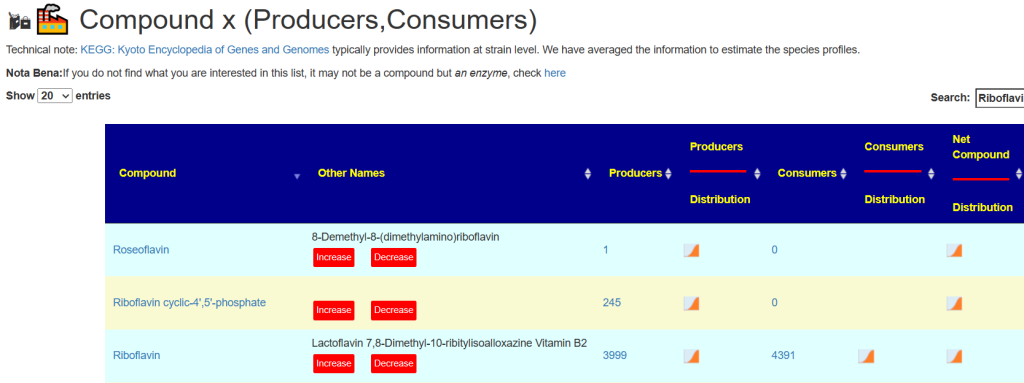Today I looked at a sample and when I looked at raising butyrate, there were ZERO bacteria selected. In other words, there were no butyrate bacteria reported by the lab. This could be defect with the reference library used by the lab or a hundred other reasons. I was also hit by requests for suggestions from OATS test.
I did a series of detail posts on OATS in an Autism context which some may find informative:
- Organic Acids Tests (OATS) and Autism #1
- Organic Acids Tests (OATS) and Autism #2
- Organic Acids Tests (OATS) and Autism #3
- Organic Acids Tests (OATS) and Autism #4
I have created A Priori Reports for Pub Med reported conditions and it seems logical to create the same for compounds produced using KEGG: Kyoto Encyclopedia of Genes and Genomes data. Some examples are: Histamine (reduce), Butyrate (increase), and for SIBO(decrease): Hydrogen, Methane
This is experimental.
Logic Used
KEGG reports at the strain level using the full genome of each strain. From this information, we approximate the species genome (assuming the strains in the species are reasonably representative).
If the existing tests are 100% accurate at identifying all of these strains…. , we should have a smile. The reality is that tests do not report on many strains, and often disagree on species!! The problem is that they are not “safe” in their identification. For why, see these three posts:
- The taxonomy nightmare before Christmas…
- The taxonomy nightmare before Christmas… Episode II
- The taxonomy nightmare before Christmas… Episode III
To get around this defect, I used patterns from AI where dealing with imprecise data is normative. I assume that we could get reasonable suggestions by imagining that every species listed is present in equal amount and then generate suggestions from this synthetic microbiome.
Where is it available on the site?
Main Public Menu
The most commonly asks are under Information From Studies. They will produce a PDF download.

Using OATS Test Results
I have created a video of using both of these pages with explanation of what and how we are doing things.

I have also added a new feature beside Using OATS test to pick probiotics. The new page presents more choices

and produce a PDF report that aggregates the suggestions over everything marked out of range.
You will see a summary of what you entered:

A list of items to take or to avoid

Logged In – Advance Display
The “kitchen sink” is available after logging in and setting display level to advance. KEGG Derived Data appears on the menu

Under this menu are two items: one for compounds (like Organic Acids) and one for enzymes (like the one that creates histamine).

On these pages you can get the list of bacteria used for each calculation.


Cross Validation
I usually do some spot checks for reasonableness of suggestions. I picked the highest value item to reduce histamines: Thyme, and was lucky to find a study specifically for this.
Impact of Thyme Microcapsules on Histamine Production by Proteus bacillus in Xinjiang Smoked Horsemeat Sausage [2021] “Results showed that histamine accumulation was suppressed by thyme microcapsule inhibitory effect on the histamine-producing bacteria and the reduction in the transcription of hdcA and hdcP genes. “
So the suggestions appear to be reasonable.
Bottom Line
This is all an academic exercise for me. I do believe that this approach will likely produce superior results than random trial and error; or relying on influencers for approaches. As always, review with your medical professional before starting.
Recent Comments